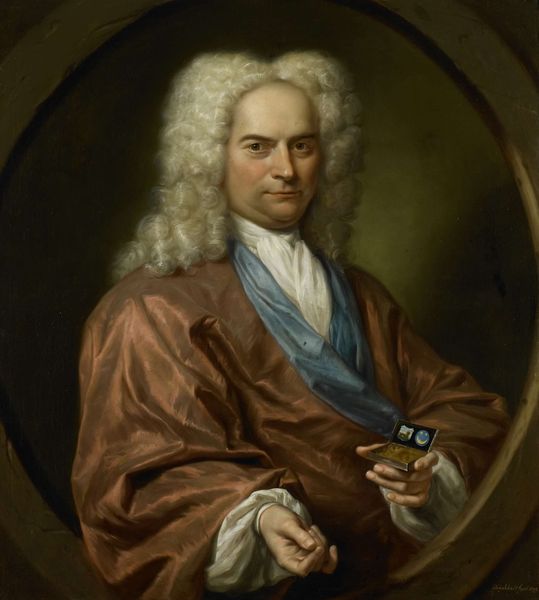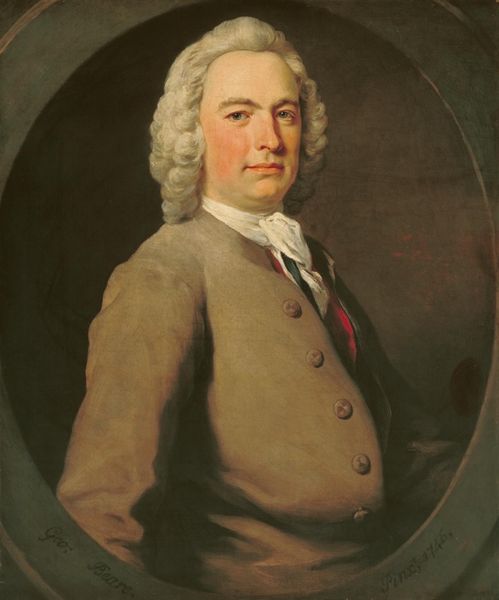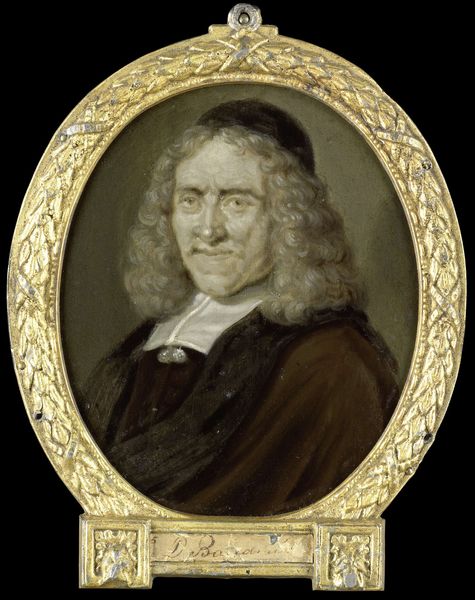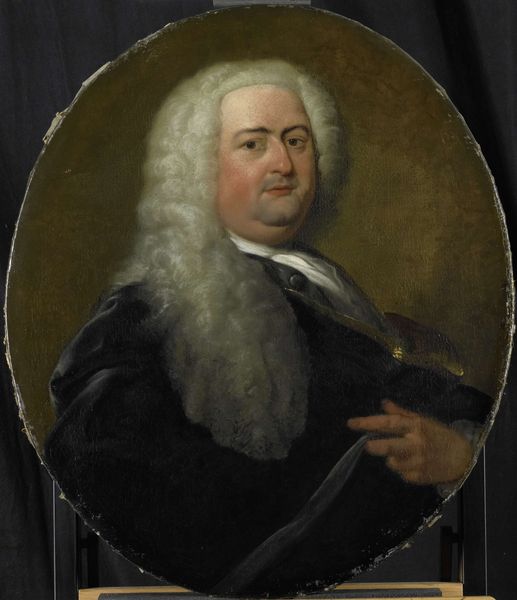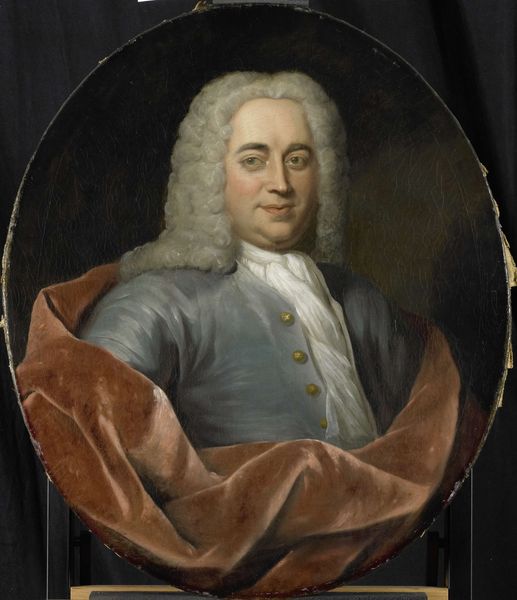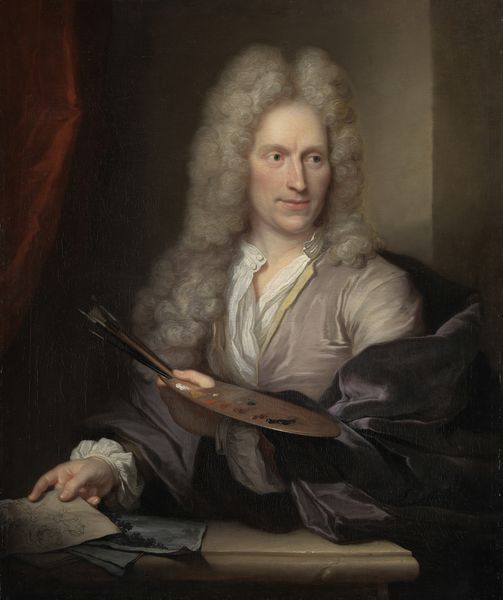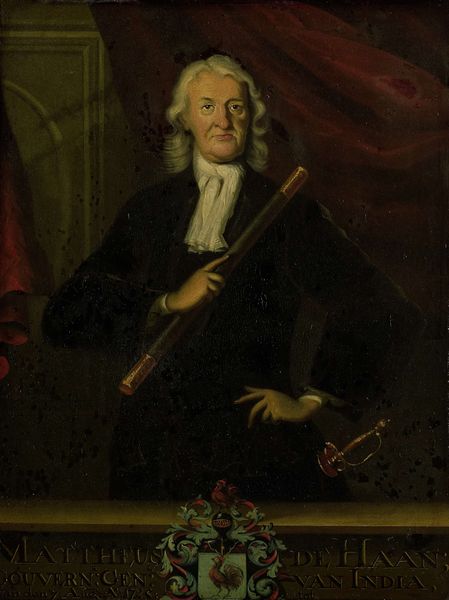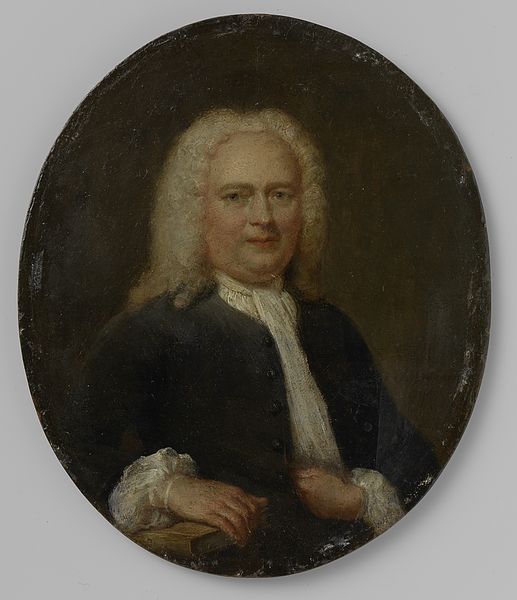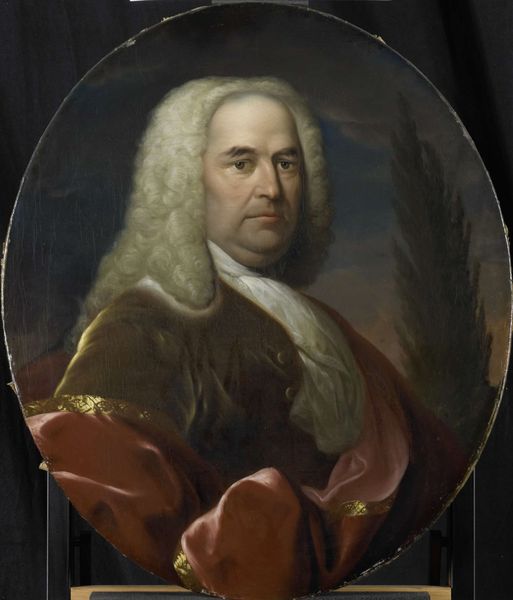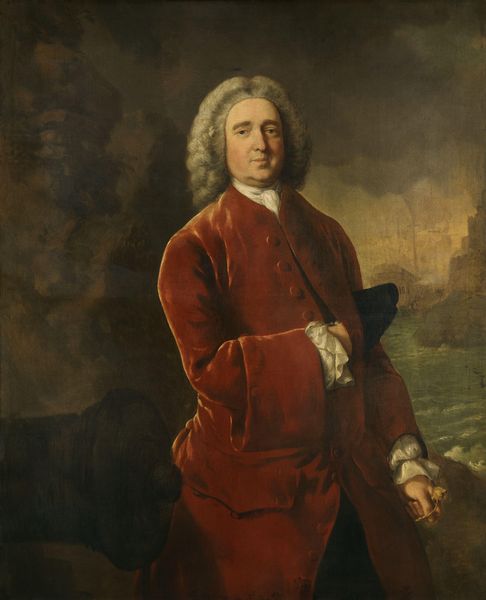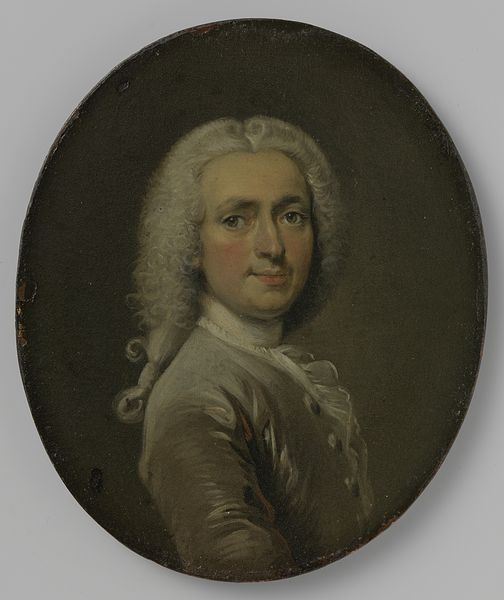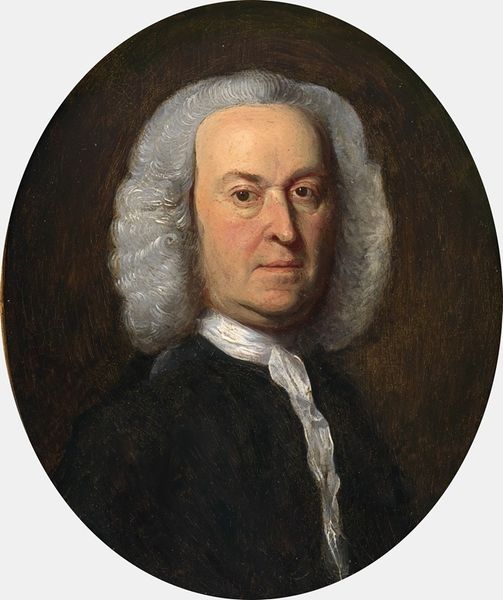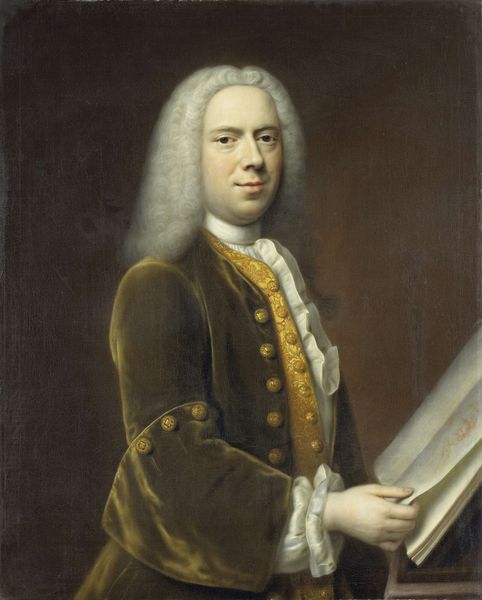
painting, oil-paint
#
portrait
#
self-portrait
#
baroque
#
portrait
#
painting
#
oil-paint
#
academic-art
#
realism
Dimensions: height 103 cm, width 83 cm
Copyright: Rijks Museum: Open Domain
Editor: Here we have Cornelis Troost’s Self-portrait from 1739. It’s oil on canvas, and what immediately strikes me is the way he presents himself both as an artist and as a gentleman. How would you interpret this layered self-representation? Curator: It's a fascinating piece, particularly when considering the rise of the artist's self-image within 18th-century society. The prominent display of his palette and brushes firmly establishes his profession, yet his elegant attire and the classical architectural setting denote status and refinement. It begs the question, how did artistic institutions of the time, like academies, contribute to this elevation of the artist? Editor: That's interesting. So, the academies helped shape how artists wanted to be seen, and maybe how they wanted the public to see them, too? Curator: Precisely! Think about the Salon system in France, for example. It was less developed in the Netherlands at this time, but still. These institutions provided not only training but also a platform for artists to assert their place in society, leading to a shift from artisan to intellectual. Would you agree that the carefully arranged composition of the painting serves a specific purpose beyond mere aesthetics? Editor: Yes, definitely! The way he's framed, both literally within the painted oval and figuratively within the composition, suggests a very deliberate construction of his public persona. I wonder, was this type of self-promotion common, or was Troost pushing boundaries in some way? Curator: While self-portraits weren't entirely new, their function evolved. Before the 18th century, they often served as demonstrations of skill. Here, though, Troost seems to be making a statement about the social standing of the artist, blurring the lines between craft and high culture. Editor: It’s like he's saying, "I’m not just a painter; I’m a person of intellect and standing." That makes you consider the public perception of artists then, versus how we see them now. Curator: Indeed. And this painting becomes a visual document of that evolving perception. Editor: I hadn’t considered that interplay between social climbing, art, and institutions until now!
Comments
rijksmuseum about 2 years ago
⋮
As a former actor and scene painter, Troost understood illusion. In this self-portrait he gazes from a mirror at himself and at us. The curtain, pedestal, palette and drawing on blue paper create a sense of depth. Every detail testifies to his technical skill. Notice how he conveyed the fine batiste cloth of his fashionable jabot – the frill of ruffles attached to his shirt – with a single stroke of white paint.
Join the conversation
Join millions of artists and users on Artera today and experience the ultimate creative platform.
